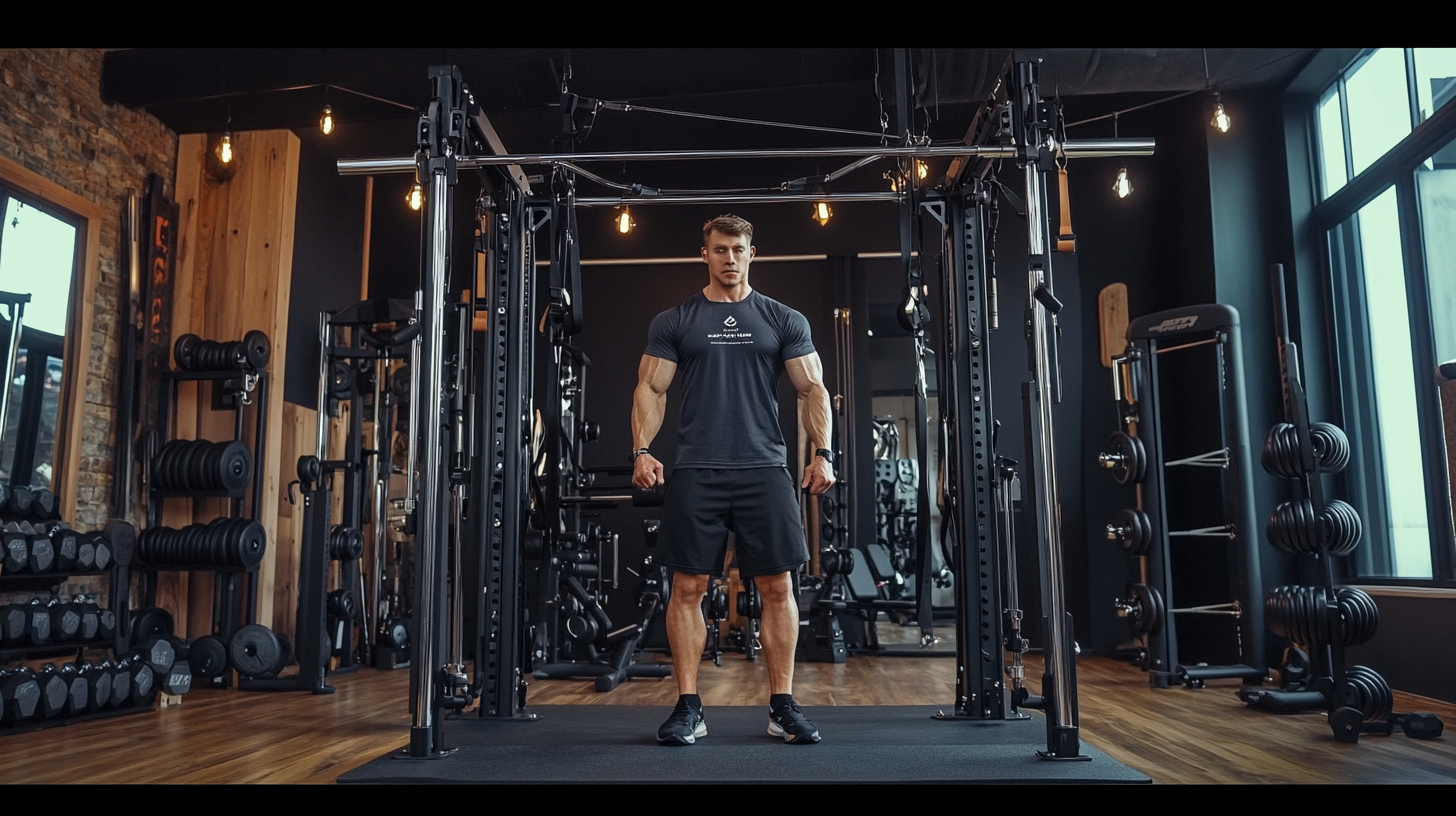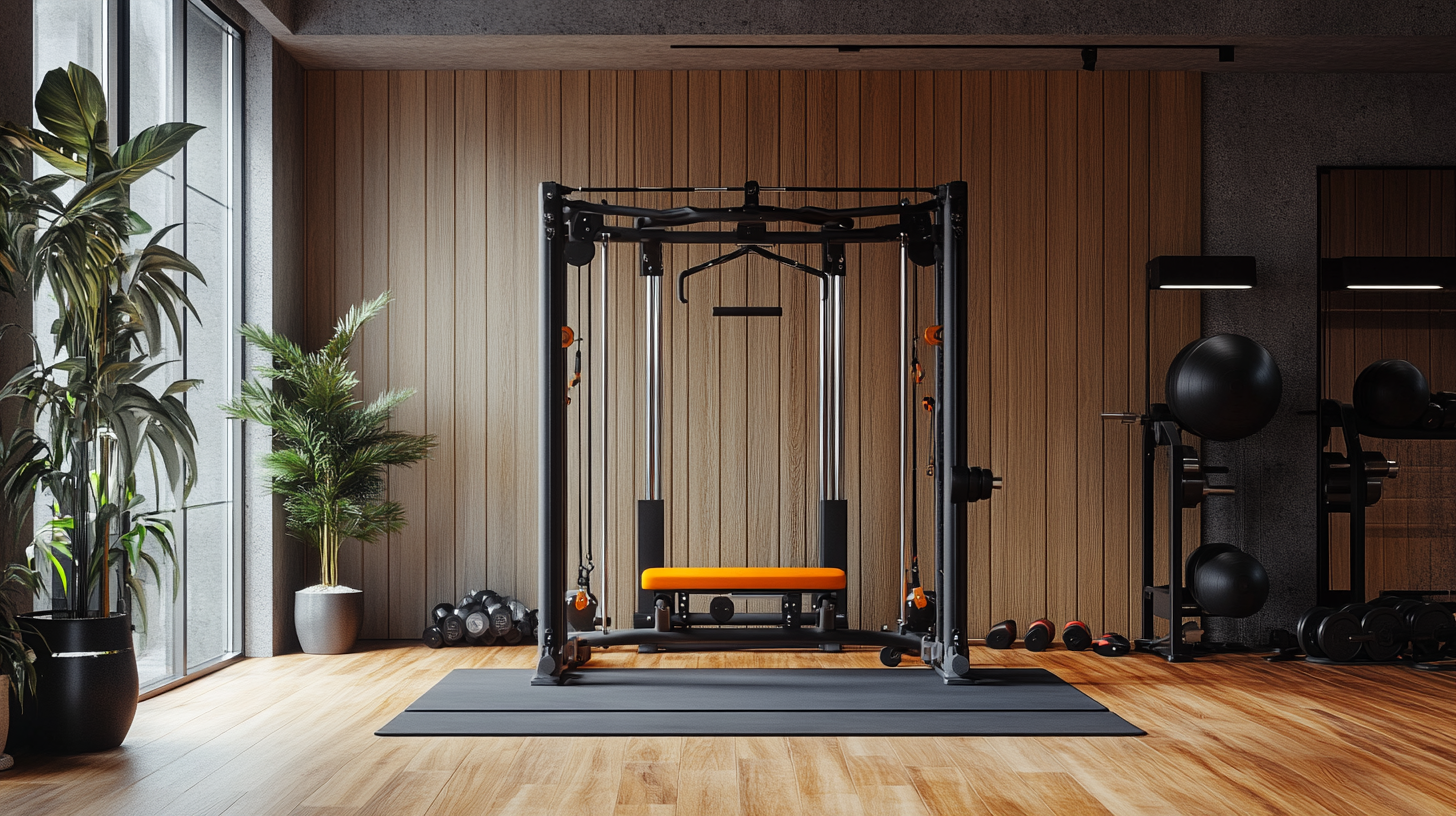The Ultimate Functional Trainer Buyers Guide: Essential Factors to Consider for Your Purchase
In recent years, the market for functional trainers has experienced remarkable growth, with a reported increase of over 20% annually, reflecting the rising demand for versatile and space-efficient fitness equipment. According to a survey by the International Health, Racquet & Sportsclub Association (IHRSA), nearly 60% of gym members consider functional training to be essential for achieving their fitness goals. This surge in popularity highlights the importance of choosing the right functional trainer, as it can significantly impact workout effectiveness and overall user satisfaction. As more individuals and fitness enthusiasts look to incorporate functional training into their routines, understanding the critical factors to consider when purchasing a functional trainer becomes vital. This ultimate buyer's guide will delve into the essential elements that can help you make an informed decision, ensuring that your investment aligns with your personal fitness journey.

Key Features to Look for in a Functional Trainer
When searching for the perfect functional trainer, understanding the key features is crucial to making an informed decision. One of the primary aspects to consider is the adjustable resistance system. Many functional trainers offer a variety of weight options, allowing users to customize their workouts based on individual strength levels and training goals. Look for machines that provide smooth adjustments, such as a pulley system, which can enhance versatility and enable a broad range of exercises.
Another essential feature to inspect is the build quality and stability of the trainer. A sturdy frame not only ensures longevity but also provides safety during intense workouts. Check for well-constructed components, such as high-quality cables and a solid base, to prevent wobbling or shifting during use. Additionally, accessories like attachments for different exercises can greatly expand the functionality of the trainer, offering the ability to perform everything from cable rows to functional movement patterns, making it an excellent investment for any fitness enthusiast.
Lastly, the footprint and design of the functional trainer should align with your workout space. Opt for a compact model if you have limited room, but ensure it doesn't compromise on the essential features. In contrast, larger trainers may offer more resistance and exercise options but require adequate space for safe usage. Balancing size with functionality will lead to a satisfying and effective workout experience.
The Ultimate Functional Trainer Buyers Guide: Key Features Distribution
Understanding Different Functional Trainer Types: Pros and Cons
When exploring the realm of functional trainers, understanding the different types available is crucial for making an informed purchase. One of the most popular options is the cable functional trainer, which usually comes equipped with dual pulleys and adjustable heights. These trainers excel in providing versatile workout options, enabling users to target specific muscle groups through cable resistance. However, the complexity of setup and potential space requirements can be drawbacks for some users, especially in smaller home gyms.
Another noteworthy type is the multi-functional trainer. These trainers often combine multiple exercise stations into one compact unit, allowing users to perform a wider variety of workouts without needing extensive equipment. The convenience of having a complete gym experience in one machine is appealing, but it may come at a higher price point and may not offer the same level of resistance as dedicated machines. Ultimately, identifying your fitness goals and available space will help determine which functional trainer type best suits your needs while weighing the pros and cons of each option.
How to Assess Space and Setup Requirements for Your Home Gym
When setting up a home gym, assessing your space and setup requirements is crucial for creating an effective workout environment. Begin by measuring the area where you plan to work out, considering both the floor space and ceiling height. This will ensure that you have enough room for essential equipment, especially if you plan to include versatile pieces like functional trainers or compact gym equipment. Considering the flow of movement is also vital; you want to have enough clearance for exercises that require more space, such as bodyweight movements or using larger machines.
In addition to physical space, think about the environment. If you’re opting for an outdoor gym setup, take into account factors like sunlight exposure and weather conditions, which can affect your workout routine. Moreover, consider storage solutions for equipment, particularly if you have limited space. Compact workout gear not only saves square footage but also allows for a varied exercise regimen without feeling cluttered. Using these guidelines will help you create a functional and enjoyable home gym tailored to your needs.

The Importance of Adjustable Resistance in Functional Trainers
When investing in a functional trainer, one of the key factors to consider is adjustable resistance. This feature not only enhances versatility in workouts but also allows users at different fitness levels to tailor their training. With adjustable resistance, individuals can progress at their own pace, starting with lighter weights and gradually increasing as their strength improves. This adaptability is especially beneficial for those who are new to strength training or recovering from injuries, as it promotes safe and effective progression.
Moreover, the ability to easily modify resistance levels can lead to more diverse workout routines. Functional trainers designed with this feature enable users to perform a wide array of exercises targeting various muscle groups, increasing engagement and preventing workout monotony. By incorporating adjustable resistance into their training regimen, users can continuously challenge themselves, stimulate muscle growth, and improve overall athletic performance. The importance of this feature cannot be overstated, as it plays a crucial role in achieving fitness goals efficiently and effectively.

Budget Considerations: How Much Should You Spend on a Quality Trainer?
When considering the purchase of a functional trainer, budget is undoubtedly a crucial factor. It's essential to determine how much you should invest while balancing quality and features. Industry reports indicate that the average price range for a quality functional trainer varies between $500 to $3,000, depending on the brand, features, and durability. For beginners, a budget of around $800 can secure a sturdy model suitable for home use. In contrast, serious fitness enthusiasts or those operating commercial facilities might consider upping their budget toward the higher end for advanced models that offer extensive exercise options and robust construction.
In addition, it's worth noting that spending less upfront might lead to greater costs down the line if the equipment lacks durability or versatility. Recent statistics emphasize that equipment longevity impacts overall fitness outcomes—investing in quality can ultimately lead to better performance and satisfaction. As consumers navigate their choices, it's crucial to evaluate not just the initial price but also the long-term value, including warranties and customer support, which can further influence the total cost of ownership. As you refine your budget, ensure that you are setting a financial plan that not only accommodates your current fitness goals but also positions you for future growth in your training regimen.
